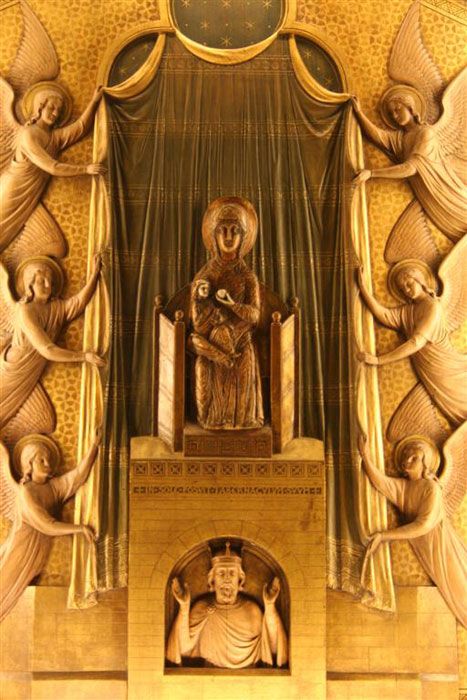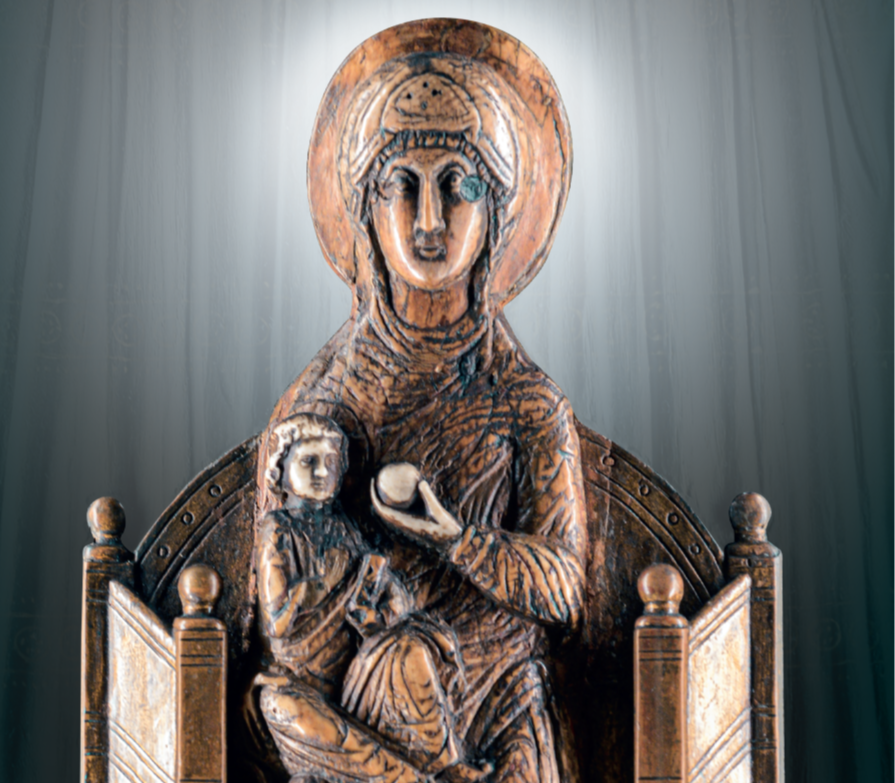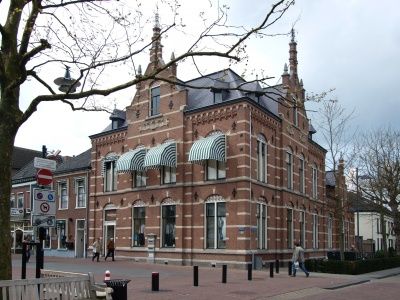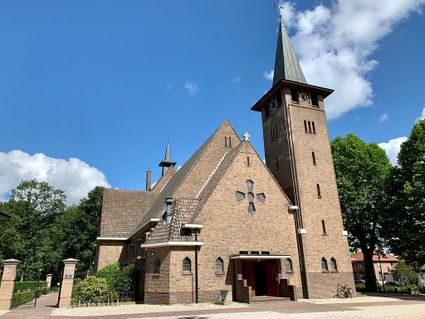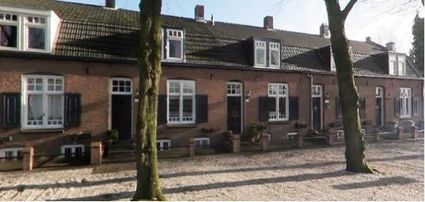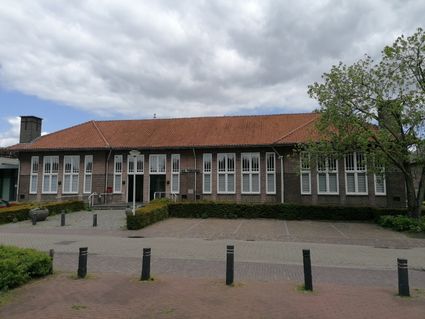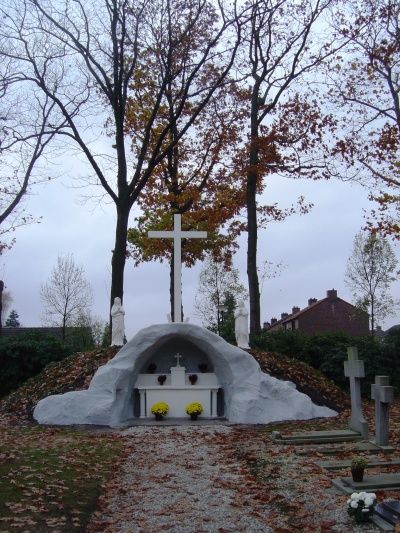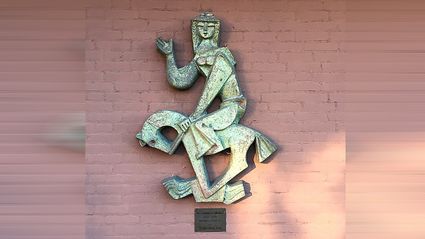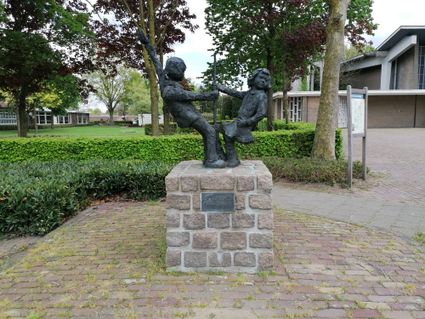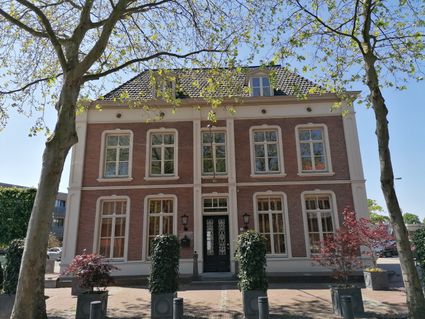Our Lady of Ommel
Neem contact op
Thirteenth-century ivory relief depicting the Holy Virgin. Since the 15th century, a miraculous statue of Mary, known as Our Lady of Ommel, has been venerated in Ommel.
Around the year 1100, the ivory statue was crafted, likely as a cover decoration for a missal or Gospel book. It is only half a centimeter thick and 24 centimeters high. From his mother’s right knee, Jesus blesses us with his right hand. In his left, he holds a book. Mary, holding her son with her right hand, offers him an apple with her left. Some believe the statue was made in Byzantium (modern-day Istanbul) and arrived in our region during the Crusades (1100–1300). Others believe it came from Cologne, where more ivory reliefs in Byzantine style were produced.
Early one morning …
Thirteenth-century ivory relief depicting the Holy Virgin. Since the 15th century, a miraculous statue of Mary, known as Our Lady of Ommel, has been venerated in Ommel.
Around the year 1100, the ivory statue was crafted, likely as a cover decoration for a missal or Gospel book. It is only half a centimeter thick and 24 centimeters high. From his mother’s right knee, Jesus blesses us with his right hand. In his left, he holds a book. Mary, holding her son with her right hand, offers him an apple with her left. Some believe the statue was made in Byzantium (modern-day Istanbul) and arrived in our region during the Crusades (1100–1300). Others believe it came from Cologne, where more ivory reliefs in Byzantine style were produced.
Early one morning during Holy Week in 1400, a resident of Ommel found the statue on a fence post near the Keskes Tree. He brought it to the church in Asten. But—oh miracle—the next morning, Mary was back in her original spot. This happened three times, and the pastor understood that Mary wished to be venerated there. He had a small cabinet made and hung it in a linden tree. The statue was placed inside. The Keskes Tree still stands today, featuring an image of Our Lady of Ommel.
But how did she end up in Ommel?
In 1430, Jan van (ten) Haven, a skipper and merchant, was sailing the Leverzee, a sea notorious for its frequent calms. When no wind came, he and his crew faced starvation and dehydration. In a dream, Mary asked him to "raise" her statue in Ommel and promised rescue. Jan found Ommel and built a chapel there. In August 1444, it was consecrated by the bishop of Liège. In 1540, the convent “Maria’s Womb” was founded. After the Peace of Münster in 1648, public worship and processions were banned, and in 1732 the sisters had to leave Ommel. They moved to Neer, Nunhem, and Haelen, taking the miraculous statue with them. In 1812, the last two sisters brought it to Asten. The chapel in Ommel had fallen into ruin, but it was rebuilt. In 1840, Mary was restored to her throne and chapel. In 1847, the statue was stolen and later found near De Loop, the stream that separates Ommel and Asten.
In early 1882, Ommel became a rectory and six months later a parish. Dionysius Koolen was appointed founding pastor, and in 1900 the neo-Gothic church was consecrated. Renowned architect and art expert Dr. P. Cuypers restored the statue in 1908 and designed a Byzantine-style throne for it, where it was placed in 1909.
In 1944, the church was completely destroyed by war. Fortunately, Father Vogels had secured the “Dear Lady” beforehand. Services were temporarily held in Café Eijsbouts, while the Boerenbond warehouse was converted into a chapel. In May 1962, the new church was consecrated, and in 1966, Mary received a new throne crafted by the Maastricht artist Kersten.
In March 1965, the head of the miraculous statue was broken off and stolen, but it was returned within weeks. The statue was placed back into the old relief and, now better secured, returned to its throne. The Dear Lady of Ommel is home once again and waits, especially in the month of May, patiently for our visit.
